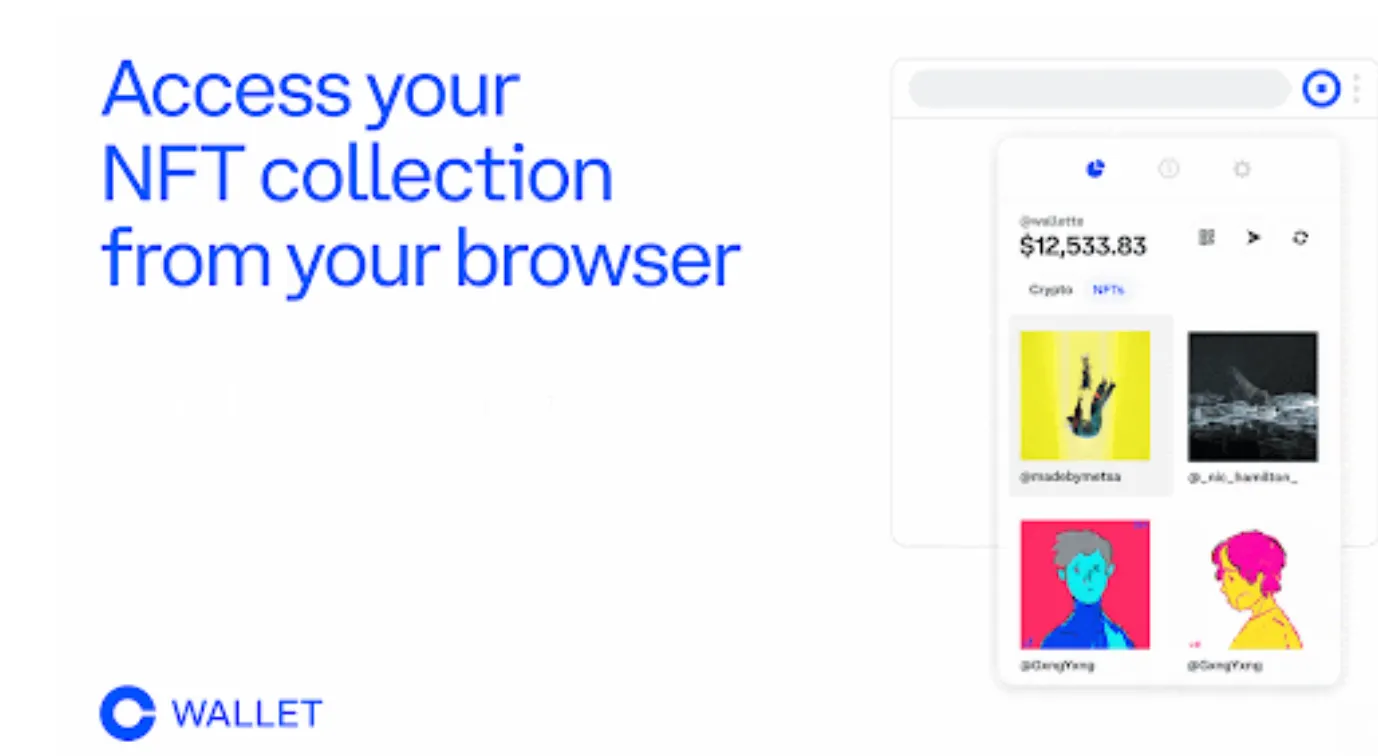In brief
- The NFT feature is part of Coinbase's broader efforts to make Web 3 easier to navigate
- Coinbase is also expected to reveal an NFT marketplace to compete with OpenSea in the near future
Coinbase announced on Tuesday that NFT owners will soon be able to view their collections right in their web browsers—a feature that the company is portraying as part of its effort to reduce the friction users experience in navigating the broader world of crypto.
The browser tool is part of Coinbase Wallet, which is a separate service from the company's main exchange platform. Like its popular competitor MetaMask, Wallet is designed to let users access NFTs, DeFi applications and other elements of the emerging world of Web3.
Both MetaMask and Coinbase Wallet began as mobile applications but evolved to be accessible as browser extensions as well.
In a blog post, Coinbase executive Sid Coelho-Prabhu said the new NFT viewing tool will be coming to Wallet in the next few days, and suggested users update their Chrome browser settings to accommodate it.
"Soon, users will be able to view their NFT collection from within the Coinbase Wallet extension, easily see their NFTs’ attributes, and easily access popular NFT marketplaces like OpenSea," wrote Coelho-Prabhu.
Here's an image from the blog post that shows the browser-based NFT viewing tool:

The browser announcement comes as Coinbase prepares to launch an NFT marketplace to compete with industry leader OpenSea. Coinbase has yet to unveil the marketplace, which the company says will include social media features, but said in October that it will arrive by the end of this year.
Meanwhile, Coelho-Prabhu used the blog post to tout another Wallet feature that helps users keep track of the growing number of networks on which they might store their tokens.
"Coinbase Wallet will now show your token balances across all supported networks in one simple, unified view. In addition to assets held on the Ethereum mainnet, Wallet will display tokens on the Arbitrum, Avalanche, Binance Smart Chain, Fantom, Optimism, Polygon, and xdai networks," he wrote.

